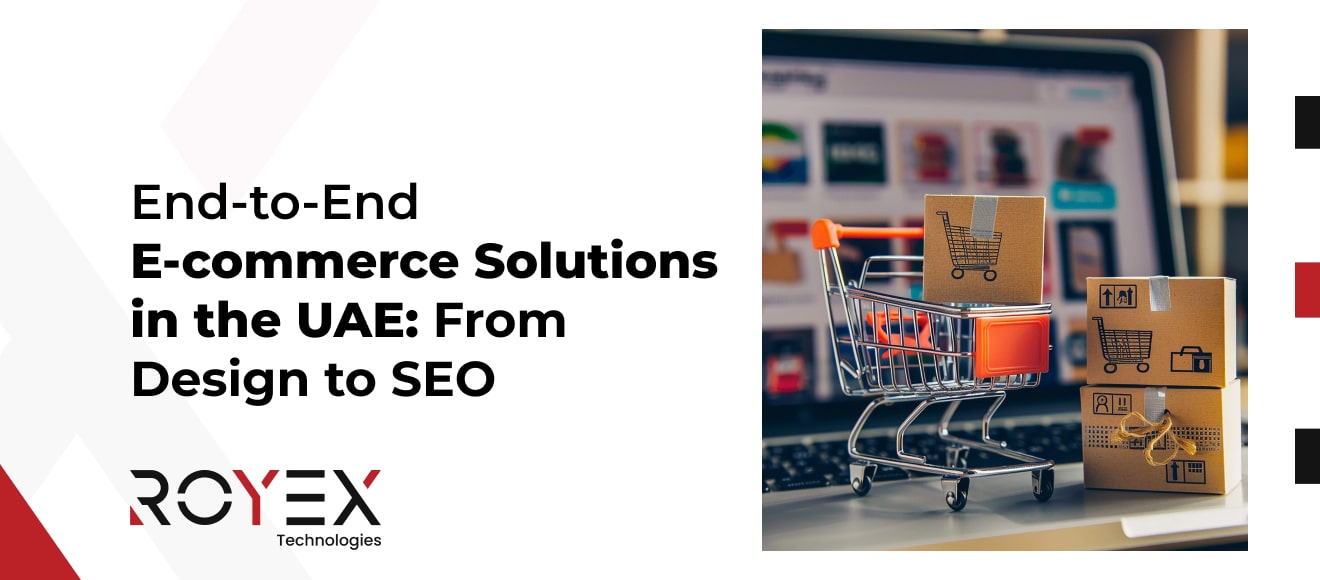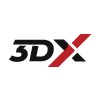
End-to-End E-commerce Solutions in the UAE: From Design to SEO
E-commerce in the UAE is no longer an experiment—it’s infrastructure. A perfect storm of high internet penetration, world-leading smartphone usage, digital payments maturity, and consumer comfort with online shopping has created a market where end-to-end execution wins. Brands that connect ecommerce web design, platform engineering, product information, logistics, payments, analytics, and ecommerce SEO into one coherent machine are the brands that scale.
This long-form guide assembles a complete UAE-focused e-commerce playbook: strategy, platform selection, UX/UI and site architecture, product data and search, performance engineering and Core Web Vitals, checkout and payment gateways in the Emirates, COD and BNPL specifics (Tabby/Tamara), fulfillment logistics across the GCC, returns and customer service, omnichannel, marketplaces (Amazon.ae, Noon), martech and analytics, and the SEO content engine that compounds traffic and revenue. Throughout, we draw attention to UAE/Middle East nuances—bilingual Arabic/English experiences, AED pricing, VAT handling, regional delivery realities, WhatsApp commerce, and cultural seasonality (Ramadan, Eid, National Day).
If you’re planning to build or scale an online store in Dubai or the wider UAE, treat this as your blueprint to move from initial scoping to sustainable growth—with ecommerce web design at the core.
The UAE & Middle East E-commerce Landscape: Why “End-to-End” Matters
-
Mobile-first shoppers. The UAE consistently ranks among the top nations for smartphone penetration. Consumers browse and buy on mobile, expect blazing speed, and value app-like experiences even on the web (PWA).
-
Payments maturity—but with regional nuance. Card payments, Apple Pay/Google Pay, and BNPL (Tabby, Tamara) are mainstream, yet COD (Cash on Delivery) still matters in certain categories and locations; your checkout must model that risk.
-
Messaging as a channel. WhatsApp is often the first and most frequent touchpoint; WhatsApp commerce for order notifications, re-orders, and quick support is a growth lever.
-
Seasonality and culture. Ramadan and Eid can reshape category behavior; the Dubai Shopping Festival and White/Black Friday spur peaks. Your stack must scale and your promotional content needs a strong ecommerce SEO footprint well before the surge.
-
Logistics complexity. Same-day/next-day across Dubai and Abu Dhabi can be normal; cross-GCC shipping times, customs, and last-mile partners differ. Returns expectations keep rising.
An end-to-end approach ensures your ecommerce website design Dubai isn’t a pretty façade but a performance-ready storefront wired into inventory, pricing, delivery ETAs, returns, and communications that your customers experience as “effortless.”
Layer 1: Strategy & Business Architecture
Define the Commercial North Star
-
Primary revenue model: D2C brand, multi-brand marketplace, subscription, B2B portal, or hybrid?
-
AOV and purchase frequency: Which informs free-shipping thresholds, BNPL positioning, and loyalty design.
-
Category realities: Fashion (size/fit returns), beauty (shade matching, routine bundles), electronics (specs/warranty), grocery (cold chain and slot delivery).
-
Geography: UAE first, then GCC (KSA, Oman, Qatar, Bahrain, Kuwait). Service levels vary; plan SLAs and carrier mix accordingly.
-
Data discipline: Make early decisions on your CDP/CRM and analytics so that ecommerce SEO, paid media, and retention can be measured and optimized from day one.
Competitive Benchmarks
Audit top UAE competitors (site speed, PLP/PDP clarity, shipping policy, returns flow, payment options like Tabby/Tamara, chat/WhatsApp presence) and international comps for best-in-class ecommerce web design patterns. Note where you can be 10× clearer or faster.
Layer 2: Platform & Architecture
Choosing the Right Commerce Engine
-
Shopify: Speed to market, strong ecosystem, robust checkout, headless options (Hydrogen), excellent for ecommerce development Dubai teams that prioritize operational simplicity.
-
Magento / Adobe Commerce: Enterprise-grade flexibility, complex catalogs, B2B price lists, advanced promotions, deep integrations at scale.
-
WooCommerce: WordPress-native, content-heavy sites that need commerce; viable for SMBs with focused catalogs.
-
Headless commerce (Composable): Front-end (Next.js/Nuxt) decoupled from commerce back-end for maximum flexibility and performance. Ideal if you require custom UX, multi-fronts (website, kiosk, marketplace feeds), and lightning-fast mobile experiences.
Decision rule: If you can meet your roadmap in a SaaS platform without heavy customization, prefer it for speed and simplicity. If you have deep B2B rules, multi-warehouse logic, or unique UX needs, go headless or Adobe Commerce.
Reference Architecture (End-to-End)
-
Storefront: Headless (Next.js) or theme-based (Shopify/Magento), tuned for Core Web Vitals and PWA capabilities.
-
Commerce Core: Product, price, promos, checkout, tax/VAT.
-
Search & Merch: On-site search with synonym handling (Arabic/English), vector or semantic search for better intent match, merchandising rules, and pinning for campaigns.
-
PIM/DAM: Centralize product attributes, specs, translations, images, video.
-
Payments: Local payment gateway UAE providers (Amazon Payment Services/PayFort, Network International, Checkout.com), Apple Pay/Google Pay, BNPL (Tabby, Tamara), and COD policies.
-
OMS/WMS/3PL: Order routing, split shipments, delivery ETAs, return labels, warehouse sync.
-
Marketing & CRM/CDP: Email/SMS/WhatsApp, lifecycle automation, segmentation, preference centers.
-
Customer Service: AI chatbot + live agents; WhatsApp Business integration, order lookups, returns automation.
-
Analytics/Attribution: GA4 + server-side tagging, event taxonomy, revenue attribution for SEO/paid/chat.
-
Security & Governance: SSO, PII encryption/tokenization, role-based access, audit logs, incident playbooks.
Layer 3: UX/UI & Ecommerce Web Design Principles
Mobile-First, Not Mobile-Shrunk
-
Design mobile views first: thumb zones, tap targets, readable line lengths, sticky CTAs.
-
Adopt PWA features—install prompts, offline caching for catalog browsing, push notifications for replenishment or back-in-stock.
Navigation & Information Architecture
-
Shallow hierarchies: 2–3 levels maximum.
-
Smart filters: size, color, brand, delivery speed, price, availability.
-
Search that understands UAE use cases: Arabic plurals, transliterations, brand slang.
-
Breadcrumbs and clear “back” behavior to reduce pogo-sticking.
PDPs That Convert
-
Crisp image carousels (zoom & video), above-the-fold price & availability, delivery estimates by location, clear returns policy.
-
Size/fit assistants for fashion; compatibility checkers for electronics.
-
Trust signals: warranty badges, verified reviews, seller/brand credibility.
-
Bundles & cross-sells that feel helpful, not pushy.
Checkout That Closes
-
One-page or clean multi-step with progress indicators.
-
Express pay (Apple Pay/Google Pay), BNPL, and COD explained with any deposit rules.
-
Address autocomplete (Dubai, Abu Dhabi, Sharjah formats), delivery time windows if applicable.
-
Guest checkout + transparent fees to keep abandonment low.
Arabic/English Bilingual UX
-
RTL correctness (alignment, punctuation, mirrored icons).
-
True localization (not just translation): copy tone for luxury vs mass market; local measurements; AED currency with VAT clarity.
-
Language toggle persistency across sessions and channels.
Layer 4: Performance Engineering & Core Web Vitals
Fast sites sell more. In mobile commerce UAE, patience is measured in seconds.
-
LCP (Largest Contentful Paint): Keep <2.5s on 4G. Optimize hero images, server response, image CDNs (WebP/AVIF), and priority hints.
-
INP (Interaction to Next Paint): Keep under ~200ms by minimizing heavy JavaScript, deferring third-party scripts, and utilizing React Server Components/partial hydration in headless builds.
-
CLS (Cumulative Layout Shift): Reserve space for media/ads, stabilize fonts with font-display: swap, avoid dynamic DOM injections that shift content.
-
Edge & CDN strategy: Cache HTML for anonymous pages, use stale-while-revalidate, and push critical assets to the edge for GCC latency wins.
-
Widget discipline: Load chat/analytics asynchronously; evaluate tag managers regularly to trim bloat.
Layer 5: Product Data, Search, Merchandising
Product Information Management (PIM)
-
Establish a single source of truth for titles, bullets, specs, attributes, translations, and SEO metadata.
-
Maintain Arabic and English fields independently; avoid machine-only translations for key pages.
-
Enforce attribute completeness and consistency for filters and faceted navigation.
On-Site Search & Discovery
-
Autocomplete, recent searches, “did you mean,” synonyms (e.g., “abaya/عباية”), typotolerance, and boosting rules.
-
Semantic and vector search to surface relevant items when queries are descriptive (“blue modest evening dress under 300 AED”).
-
Personalized ranking where permitted—use behavior signals to refine results.
Visual Merchandising
-
Seasonal pinning and campaign zones (Ramadan gift sets, UAE National Day edits).
-
Automated “back-in-stock,” “price drop,” and “new arrivals” feeds for ecommerce SEO landing pages.
Layer 6: Payments in the UAE (and Why They Matter for UX)
-
Offer local gateways (Amazon Payment Services/PayFort, Network International, Checkout.com) with AED settlement.
-
Express wallets (Apple Pay/Google Pay) for mobile conversion.
-
BNPL (Tabby/Tamara): Position clearly on PDP and checkout; articulate fees, returns handling.
-
COD: If supported, publish rules (deposit thresholds, address verification). COD can increase first-order conversion for cautious customers but must be managed to reduce NDRs (non-delivery returns).
-
Explicitly state VAT and invoice availability; B2B buyers expect tax clarity.
Layer 7: Logistics, Fulfillment & Returns
-
SLA transparency: Delivery estimates by city/area. Same-day in Dubai is often achievable; next-day across major Emirates.
-
Carrier mix: Aramex, DHL, and local last-mile specialists; route by cost/time/reliability.
-
OMS logic: Split shipments by warehouse, pre-orders, back-orders, partial fulfillments.
-
Returns policy visible on PDP and checkout. Mobile-first returns center with printable labels or courier pickup scheduling.
-
Packaging aligned with category (luxury unboxing vs eco minimalism), especially for gifting seasons.
Layer 8: Customer Service, AI Chat, and WhatsApp Commerce
-
AI chatbots do instant FAQs, size guidance, delivery ETAs, and recommendations; escalate to human agents for exceptions.
-
WhatsApp Business for order confirmations, delivery updates, return workflows, care tips, and “Shop the look” prompts.
-
Conversation design tied into PIM and order data—accuracy beats verbosity.
-
SLAs and sentiment alerts for VIP customers or high-AOV carts.
Layer 9: Content & Ecommerce SEO (From Strategy to Scale)
Treat search as a compounding asset. The best ecommerce web design creates a content lattice Google and AI search tools can crawl, understand, and reward.
Technical SEO
-
Clean, localized URL structures in both languages; avoid auto-translated slugs.
-
Canonicals, hreflang for ar-AE/en-AE, XML sitemaps per language.
-
Schema.org for products, offers, reviews, breadcrumbs, FAQs, how-tos, organizational details.
-
Swift pages with rock-solid Core Web Vitals.
On-Page SEO
-
Title tags and meta descriptions with commercial intent (“Buy [Brand] [Product] in Dubai | Fast Delivery in UAE | AED Pricing”).
-
H1/H2 hierarchy, descriptive alt text, internal linking between PLPs, PDPs, buying guides, and comparison pages.
-
Bilingual editorial that reflects local search intent (Ramadan gift ideas, UAE summer skincare, electronics back-to-school).
Content Engine
-
Pillar pages (e.g., “The Ultimate Guide to Abayas in the UAE” with size/fit/care/occasion).
-
Comparison pages (“Shopify vs Magento for UAE Retailers,” “Tabby vs Tamara BNPL”).
-
Buying guides and “best of” lists mapped to high-intent keywords.
-
Seasonal hubs (Ramadan, Eid, National Day, DSF) prepared weeks in advance.
-
UGC & reviews integrated into PDPs and repurposed in blog and social.
-
Programmatic SEO where suitable (variant landing at scale with quality controls).
Off-Page & Digital PR
-
Partnerships with UAE influencers and publishers; product sampling; press around launches and sustainability initiatives.
-
Ethical link earning through data studies and unique guides relevant to GCC shoppers.
Layer 10: Conversion Rate Optimization (CRO)
-
Hypothesis backlog based on user research, analytics, heatmaps, and chat transcripts.
-
A/B test PDP media order, badges (in-stock, limited), shipping threshold messages, trust copy, coupon UX, express pay prominence.
-
Social proof timing (show reviews after first scroll or price view).
-
Cart reminders and incentives tuned by margin and seasonality; avoid blanket discounts.
-
Post-purchase: one-click reorders, “Complete your set,” cross-sell via WhatsApp or email.
Layer 11: Analytics, Attribution, and Data Foundations
-
Event taxonomy: view item, add to cart, begin checkout, payment add, purchase, returns initiated, refund issued, chat opened, chat-assisted purchase.
-
Revenue attribution that includes chat/WhatsApp touches.
-
LTV cohorts by channel, category, and payment type (BNPL vs card vs COD).
-
Server-side tagging for resilience and accuracy.
-
CDP/CRM to unify profiles, consent, and lifecycle triggers (welcome series, replenishment, VIP tiering).
Layer 12: Compliance, Security & Governance
-
PII handling and data minimization; encrypt sensitive fields, vault tokens for payments.
-
Access control with least privilege; SSO for staff; audit logs.
-
Content governance: who approves returns policy, size charts, and campaign claims; SLA for updating both languages.
-
Incident response: order outage, gateway issues, courier downtime—communication templates ready for web and WhatsApp.
Layer 13: Omnichannel & Marketplaces
-
BOPIS/Click-and-Collect where stores exist; real-time inventory.
-
Marketplace integrations with Amazon.ae and Noon, syncing pricing, stock, and product content from your PIM.
-
Channel hygiene: marketplace content should lift brand reach, not undercut margins or cannibalize SEO-rich product pages.
-
In-store apps or kiosks connected to the same catalog and loyalty scheme for a unified experience.
Layer 14: B2B & Wholesale in the UAE
-
Company accounts, negotiated pricing, MOQ, quote-to-order workflows.
-
Credit terms and purchase limits; VAT invoices and compliance exports.
-
Sales rep tools (punchout catalogs, order templates, reorder frequency).
-
Private catalogs for distributors across GCC.
Layer 15: AI Across the Journey (Beyond Chat)
-
Recommendations (complementary, substitute, sequence next-best purchase).
-
Search re-ranking by real-time behavior.
-
Dynamic pricing and promotion optimization (within governance).
-
Creative variations for ads and email subject lines with brand-safe templates.
-
Forecasting for demand, inventory allocation, and courier capacity in peak periods.
Implementation Roadmap (90–120 Days to Live, Then Continuous Growth)
Phase 0: Discovery (2–3 Weeks)
-
Business goals, KPIs, category needs, payment and logistics constraints.
-
Platform selection (Shopify/Magento/WooCommerce/Headless).
-
Data model (PIM taxonomy, Arabic/English fields), analytics plan, SEO baseline audit.
Phase 1: Foundation Build (4–8 Weeks)
-
Ecommerce web design system (mobile-first components, RTL and LTR).
-
Catalog import and PIM workflows; content templates for PDP/PLP.
-
Payment, shipping, tax (VAT) configuration; BNPL and COD logic.
-
WhatsApp and AI chat MVP; order tracking integration; returns portal.
-
Technical SEO ready (sitemaps, hreflang, schema); Core Web Vitals baseline.
Phase 2: Launch & Stabilize (2–3 Weeks)
-
Soft launch with real orders; monitor errors and UX friction.
-
A/B tests on critical flows (PDP, cart, checkout).
-
Content calendar kickoff (buying guides, seasonal hubs); ecommerce SEO monitoring.
Phase 3: Scale & Optimize (Ongoing)
-
Expand channels (Instagram Shopping, Google Merchant Center, marketplaces).
-
Personalization rollouts; email/WhatsApp lifecycle automation.
-
CRO sprints; site speed refactoring; PWA enhancements.
-
Quarterly architecture reviews and governance audits.
KPIs That Matter in the UAE Context
-
Speed: LCP/INP/CLS on mobile 4G in major Emirates.
-
Conversion: Overall and chat-assisted conversion rate; checkout funnel drop-offs.
-
AOV & Margin: Effects of BNPL, bundles, express delivery fees.
-
Customer Experience: CSAT/NPS by channel (web, WhatsApp), WISMO deflection.
-
Operations: On-time delivery rate, NDRs for COD, return rate trends.
-
SEO: Non-brand organic clicks, discoverability of Arabic pages, featured snippets on seasonal guides, rich results on products/reviews.
-
LTV/Retention: Repeat rate, time-to-second purchase, cohort performance by acquisition channel.
Common Pitfalls (and How to Avoid Them)
-
Pretty site, slow site. Design flourishes that crush Core Web Vitals. Fix with disciplined performance budgets and CDN/edge caching.
-
Lost in translation. Machine-only Arabic for key pages degrades trust; invest in human localization for high-impact content.
-
Payment friction. Hiding BNPL until the last step or burying Apple Pay/Google Pay reduces mobile conversion. Surface early.
-
Unclear delivery promises. Vague shipping copy increases pre-purchase tickets and returns. Show city-level ETAs.
-
Under-invested PIM. Dirty attributes break filters, search, and SEO. Adopt a PIM mindset from day one.
-
No returns clarity. Ambiguity drives support load and churn; create a clear, mobile-first returns center.
-
Over-automation without handoff. AI chat must escalate elegantly, especially for VIP or sensitive cases.
-
SEO as an afterthought. Retro-fitting ecommerce SEO is costlier; design IA, internal links, and schemas early.
Sample Use Cases by Vertical
Fashion & Beauty
-
Size/fit assistants, try-at-home or generous exchanges, Ramadan capsule hubs, UGC-rich PDPs.
-
BNPL prominence and simple returns to lower purchase anxiety.
Consumer Electronics
-
Spec comparison tables, warranty clarity, accessory bundles, store pickup for urgent needs.
-
Post-purchase automation: how-to guides, care, firmware updates.
Grocery & Quick Commerce
-
Delivery time slots, substitutions policy, favorites/re-order, WhatsApp lists.
-
PWA for “app-like” speed without forcing an app install.
Luxury & Fine Jewelry
-
Premium ecommerce web design, high-fidelity imagery/video, appointment booking, concierge chat, insurance and secure shipping options.
-
Content-led SEO (craftsmanship stories, certification guides).
Budgeting & Total Cost of Ownership (TCO)
-
Platform: SaaS subscriptions or licensing (Shopify/Adobe Commerce), hosting for headless.
-
Build: UX/UI design system, front-end, back-end, integrations, QA, localization.
-
Martech: Email/SMS/WhatsApp platforms, reviews engine, search/merch SaaS.
-
Ops: PIM content production, photography/video, translations, customer service staffing.
-
SEO & Content: Continuous editorial calendars, technical maintenance, link earning.
-
Optimization: CRO tooling, A/B testing, periodic performance sprints.
Align budgets to revenue targets and margin realities; invest proportionally in the compounding layers (SEO content, speed, data quality).
The Strategic Role of Ecommerce Web Design
Why center everything on ecommerce web design? Because the storefront is the customer’s reality. It is where brand, product, trust, speed, and service collide:
-
Signals trust: clean UI, predictable patterns, visible policies.
-
Drives discovery: navigational clarity, filters, collections, search.
-
Accelerates buying: sticky CTAs, express pay, frictionless forms.
-
Improves SEO: crawlable structure, content depth, internal linking.
-
Supercharges mobile performance: responsive layout, PWA features, optimized assets.
Great design sells. And in the UAE’s mobile-first market, it sells fast.
Why Royex Is the Best Choice for Ecommerce Development in Dubai
Choosing a partner is choosing a future operating system for your online business. Royex Technologies brings a UAE-native, results-driven approach to ecommerce development Dubai—from storefront to SEO, from WhatsApp to warehouses.
1) UAE-Native Expertise
We understand the payment gateway UAE landscape (Amazon Payment Services/PayFort, Network International, Checkout.com), BNPL (Tabby, Tamara), COD risk, AED pricing and VAT, and the logistics reality of Emirates-wide and GCC shipping. Our Arabic/English design and content workflows are proven.
2) High-Performance Ecommerce Web Design
Our teams craft mobile-first design systems with Core Web Vitals as non-negotiables. We tune Shopify themes, build headless storefronts (Next.js/Nuxt) when flexibility and speed matter, and optimize PDP/PLP patterns to convert.
3) Platform Mastery
Shopify for speed and growth, Magento/Adobe Commerce for enterprise complexity, WooCommerce for content-heavy sites, and headless commerce when you need composable power. We integrate PIM, OMS/WMS/3PL, and marketing stacks cleanly.
4) End-to-End Integration
Payments, checkout, BNPL, courier ETAs, returns automation, WhatsApp commerce, AI chat, reviews, loyalty, CDP, GA4/server-side tagging—wired into a single experience that customers love and your team can operate.
5) SEO & Content That Compound
We build the architecture and content engine for ecommerce SEO: technical hygiene, bilingual content at scale, rich schemas, category hubs, and buyer’s guides mapped to UAE intent. Traffic grows because the machine runs.
6) Measured Outcomes & Ongoing Optimization
We instrument analytics for chat-assisted conversion, cohort LTV, and operational KPIs (NDRs, on-time delivery). Then, we run CRO sprints so your store keeps getting faster, clearer, and more profitable.
7) Security & Governance
From PII handling and tokenized payments to content governance and incident playbooks, we design for safety and reliability—crucial when your brand equity is on the line.
If you want an ecommerce website design Dubai that isn’t just beautiful but revenue-engineered, Royex is your partner. We bring design craft, engineering rigor, and UAE-specific know-how together so your e-commerce operation performs—from design to SEO, from inquiry to repeat purchase.





